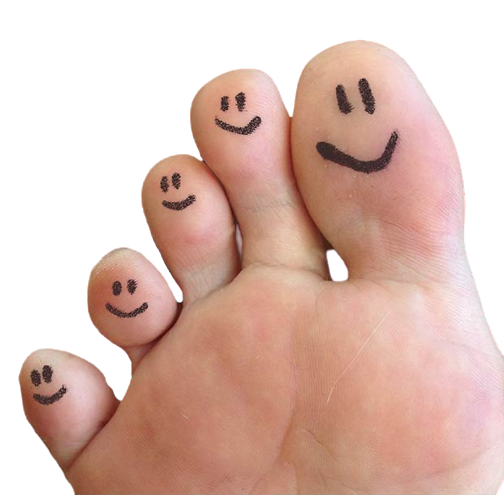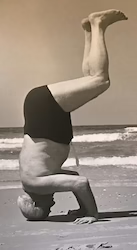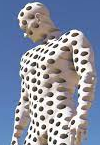The human foot has 26 bones, 33 joints, and more than 100 muscles, ligaments, and tendons made of strong fibrous tissues to keep all the moving parts together — not to mention more sweat glands than any other part of the body.
Indeed, the foot is an evolutionary marvel, capable of handling hundreds of tons of force — your weight in motion — every day. The foot’s myriad parts, including the toes, heel, and ball, work together to get you from one place to another.
But the stress of carrying you around puts your feet at high risk of injury, higher than any other body part. And many foot problems, including hammertoes, blisters, bunions, corns and calluses, claw and mallet toes, ingrown toenails, toenail fungus, and athlete’s foot, can develop from neglect, ill-fitting shoes, and simple wear and tear.
Pain in your feet may even be the first sign of a systemic problem. Gout, for example, often affects the foot joints first.
So what can you do to identify and manage some common foot-health issues? Many people find the Feldenkrais Method contributes greatly to reducing the pain of many foot problems, and ultimately, increasing their ability to walk, run and otherwise enjoy their life.
Before discussing several foot difficulties, I have included a video of Jeff Haller discussing the Feldenkrais approach to functions of the foot, and the neurological aspects of learning so that the foot provides continual propulsion.
Buildup of Corns and Calluses

Corns and calluses form after repeated rubbing against a bony area of the foot, usually by shoes that don’t fit well, the Cleveland Clinic says.
Corns can appear on the tops and sides of your toes as well as between your toes, while calluses tend to form on the bottoms of the feet, especially under the heels or balls of the feet, and on the sides of the toes. These compressed patches of dead skin cells can be hard and painful to walk on.
Clearly these are the result of improper contact between the foot and the ground in standing and walking. Feldenkrais sessions (either individual, or in recorded or group classes) help you to devise ways to practice walking so that you can enjoy better contact with the ground, and more comfort in walking.
Click to view a series of lessons particularly focussed on the toes.
Plantar Fasciitis

Plantar fasciitis is a painful disorder in which the ligament — the fascia — that connects the ball of the foot to the heel becomes inflamed or even torn. Plantar fasciitis has no visual signs or symptoms, just pain and stiffness in the foot, says Tracey C. Vlahovic, a podiatrist and a clinical professor at the Temple University School of Podiatric Medicine in Philadelphia.
While conventional approaches recommend stretches to reduce the strain in the foot, in my Feldenkrais practice, I particularly find that, again, the process of weight distribution is faulty and in fact, there is too much stretching as well as chronic tightening of certain muscles. Thus, in my practice I work on how a person can learn how to undo the chronic pattern of tightening and instead have a more flowing contact while walking, running, and so on. An example course might be finding the freedom in the toes however, there are several other sets of Feldenkrais that you may need (soon to be online).
An example of an approach by Dr. Nur Bar On that was originally developed for helping with heel spurs (but which people found helpful for plantar fasciitis, is available on YouTube:
Hammertoes

If your second, third, or fourth toe is crossed, bent in the middle of the toe joint, or just pointing at an odd angle, you may have what’s called a hammertoe. Ill-fitting shoes contribute to the formation of hammertoes.
Feldenkrais sessions can help a great deal. We have many lessons that you can follow to help the toes straighten and be able to be a functional part of your walking and running. Private sessions (called Functional Integration) may be the first step for you and the Feldenkrais practitioner to develop a learning plan that best fits for you.
A brief example of a Feldenkrais approach to toe spacing with Taro Iwamoto is available on Youtube:
I have a short series of 4 lessons that you may find helpful (click for more information).
Bunions

A bunion is a bony bump at the base of the big-toe joint. The changes within the foot that cause the bump also cause the big toe to turn inward, toward the smaller toes, according to the Mayo Clinic.
Research suggests the condition is common among runners and other athletes of all levels, but it’s generally seen as an overuse injury for which nearly everyone is at risk, Vlahovic notes.
Bunions can result from congenital deformities, arthritis, trauma, heredity, or habitually wearing shoes that are too narrow in the toe. Regardless of what caused them in the first place, bunions can be made worse by high heels and constrictive shoes.
The way that you distribute weight on the foot in standing and when you walk is crucial. Sometimes small irregularities (perhaps related to adjusting to tight-fitting shoes, or high-heels) can begin a process of the bones of the foot changing to unnatural shapes ultimately in bunions. In a series of Feldenkrais sessions, before and, if needed, after surgery, the practitioner can assist the foot to have a more equal distribution of weight. If you suffer from bunions, you might find some short-term relief in my Happy Toes course.
Overall
Foot problems seriously undermine our sense of wellbeing and our freely navigate in the world. There are many ways that the Feldenkrais Method can assist in easing the effects of foot problems — in this article, I have identified several recognizable foot problems and provided some hints on How the Feldenkrais Method can help.
Feldenkrais practitioners are not medically trained and so with any of these diagnoses, a person is advised to consult with their physician particularly to check if there are underlying systemic problems that need to be addressed, for example, Gout, as mentioned, above.
(source of medical information (in orange): https://www.everydayhealth.com/foot-health-pictures/common-foot-problems.aspx)
Enjoy my Short course, Happy Toes. This course has four lessons that cover many exercises demonstrating the basic ways you can reduce discomfort in the toes – and parts of the foot. Standing, walking and sitting become easier. Click here for more information.






